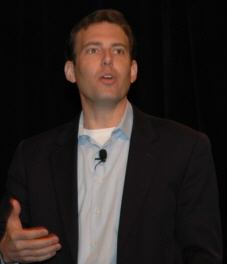OSBC: enterprise applications next wave for open source


In his keynote, Larry Augustin, CEO of Medsphere, left everyone with no doubt that the next frontier for open source software development is the applications space. Augustin talked about four successful models, each representing a different application category: sugarCRM, Compiere, Asterisk, and VistA (the technology his company first deployed to the private sector) and looked at what they had in common to come up with six rules that identify a ripe opportunity for open source: (1) Look at heavy applications that are traditionally a big expense and take years to implement. These include, CRM, ERP, PBX, and EHR (electronic health records). (2) The presence of big proprietary traditional competitors with big upfront software licensing fees that make it hard to get started. (3) A large, enthusiastic free user base so you don't have to spend a lot of time educating them and the market about what you are doing, giving you sales leverage. (4) An enthusiastic developer ecosystem--you have a community of people that participate in some way. (5) There is a big enterprise market opportunity: for healthcare, the market is to grow to $25B IT market by 2007. (6) You have a big under-penetrated SMB market opportunity.
Augustin then gave two drivers for the next wave of open source. The first is developer interest. He said that applications give fodder for the next generation of developers looking for a new challenge. "They're not going to build Linux again," he said. The second reason is that the traditional enterprise software model is broken (long sales cycles, expensive, inaccessible to SMBs, etc.).